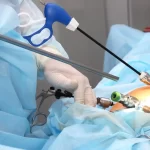Pancreatic Cancer Awareness: Early Detection and Prevention
Pancreatic Cancer Awareness: Early Detection and Prevention
Pancreatic cancer, one of the most challenging forms of cancer to diagnose and treat, remains a significant health concern worldwide. This article seeks to shed light on the importance of pancreatic cancer awareness, emphasizing the crucial role of early detection and prevention in improving outcomes. By understanding the disease, recognizing risk factors and warning signs, and embracing lifestyle changes, we can collectively work towards a future where pancreatic cancer’s impact is significantly reduced.
1. Understanding Pancreatic Cancer
Pancreatic cancer begins in the tissues of the pancreas, an essential organ that lies behind the lower part of the stomach. This type of cancer is notorious for its late detection and poor prognosis. Understanding the biology of pancreatic cancer, its types, and how it affects the body is pivotal in grasping the urgency of early detection and prevention.
2. Risk Factors and Warning Signs
Several factors increase the risk of developing pancreatic cancer, including age, smoking, obesity, and a family history of the disease. Additionally, certain genetic conditions and chronic pancreatitis are known risk factors. Early warning signs often include jaundice, abdominal or back pain, unexpected weight loss, and changes in stool. Being aware of these risk factors and symptoms is the first step in early detection.
3. Importance of Early Detection
Early detection of pancreatic cancer significantly improves treatment outcomes. Unfortunately, symptoms often appear in advanced stages, making early detection challenging. This section highlights the importance of being attentive to bodily changes and seeking medical advice for any concerning symptoms.
4. Screening and Diagnostic Tools
For individuals at high risk, screening tools such as endoscopic ultrasounds and magnetic resonance imaging (MRI) can be life-saving. Advances in medical technology have enhanced the ability to detect pancreatic cancer earlier. This part of the article will discuss the current screening and diagnostic methods available for pancreatic cancer.
5. Lifestyle Changes for Prevention
Prevention plays a key role in reducing the risk of pancreatic cancer. Lifestyle changes, including quitting smoking, maintaining a healthy weight, a balanced diet, and regular exercise, can significantly decrease the risk. This section will provide practical advice on how to implement these changes in daily life.
6. Support and Resources for Patients
Being diagnosed with pancreatic cancer can be overwhelming for patients and their families. Support systems, including counseling, support groups, and patient advocacy organizations, are essential. This part of the article aims to provide information on where to find these resources and how they can help in coping with the disease.
7. Conclusion: Spreading Awareness for Better Outcomes
In conclusion, spreading awareness about pancreatic cancer, its risk factors, symptoms, and the importance of early detection cannot be overstated. By increasing awareness, we can encourage more people to participate in preventive measures and screenings, ultimately leading to earlier diagnoses and better outcomes. It’s a collective effort, and each step taken towards awareness and education can make a significant difference in the fight against pancreatic cancer.
Through education, lifestyle changes, and advancements in medical science, we can hope to see a future where pancreatic cancer is no longer a formidable opponent, but a manageable condition with significantly improved survival rates.

 Previous Post
Previous Post Next Post
Next Post